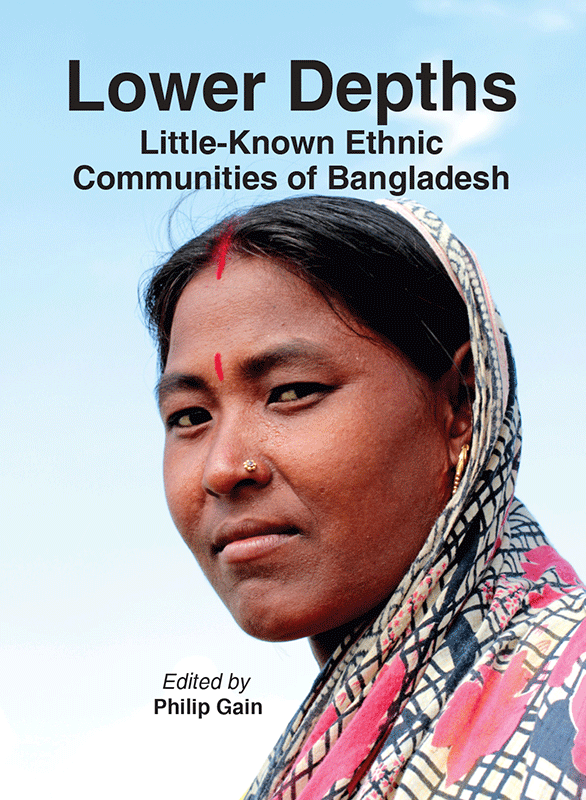Edited by Philip Gain | English PBK, 220 pages, 2016 | Price: Tk. 400 US$15
In the latest government record (2010), the number of the ethnic communities in Bangladesh was 27 (duplications considered, their actual number is 24). The ethnic communities themselves estimate the number of their communities to be more than 45. Of thesecommunities 11 live in the Chittagong Hill Tracts (CHT). In its recent (2014-2015) inventory, the Society for Environment and Human Development (SEHD) has estimated the number of the ethnic communities outside the tea gardens and the CHT to be 37 in addition to those on the official records. These communities are concentrated basically in 25 districts of the Northwest, North-
It contains brief profiles of 40 communities of the plains land giving succinct description of their history of origin, life, livelihood, education, culture, tradition and customs. Each profile is accompanied by a portrait, a table showing spatial distribution of the community and a geographical map showing its locations (upazilas and districts).
In addition to the profiles of the ethnic communities, it includes a chapter with a good number of investigative reports on brutal attacks, killings, arson and other atrocities associated with adivasis in North Bengal. These investigative reports, first published in national and local newspapers and magazines, show the pattern of abuses that the adivasis face.
A special addition to this volume is the agenda of the tea plantation workers and ethnic communities developed with their active participation. It focuses on their political protection, wage deprivation, work condition, health, sanitation, difficulties women and children face, education, living conditions, access to land, language and culture, etc.
Tallied with other communities in the volume on the tea communities (Slaves In These Times) and the photo album (On the Margins: Image of Tea and Ethnic Communities), one will find that there are at least 110 ethnic communities in Bangladesh excluding Bangalees, which means the government is yet to recognize a large number of ethnic communities. This book and other SEHD publications on adivasis stand unique to assist the government and other non-state actors in coming to a consensus about the number and identities of these ethnic communities.
The key message that this book communicates is that the ethnic communities are one of the most vulnerable people in Bangladesh. They continue to remain socially excluded, overwhelmingly illiterate, deprived and disconnected. They have also lost their original languages in most part as well as their culture, history, education, knowledge and unity. It is in this context that they deserve recognition of their identities and special attention from the state, not just equal treatment.
Edited by Philip Gain
English PBK, 220 pages, 2016
Price: Tk. 400 US$15

